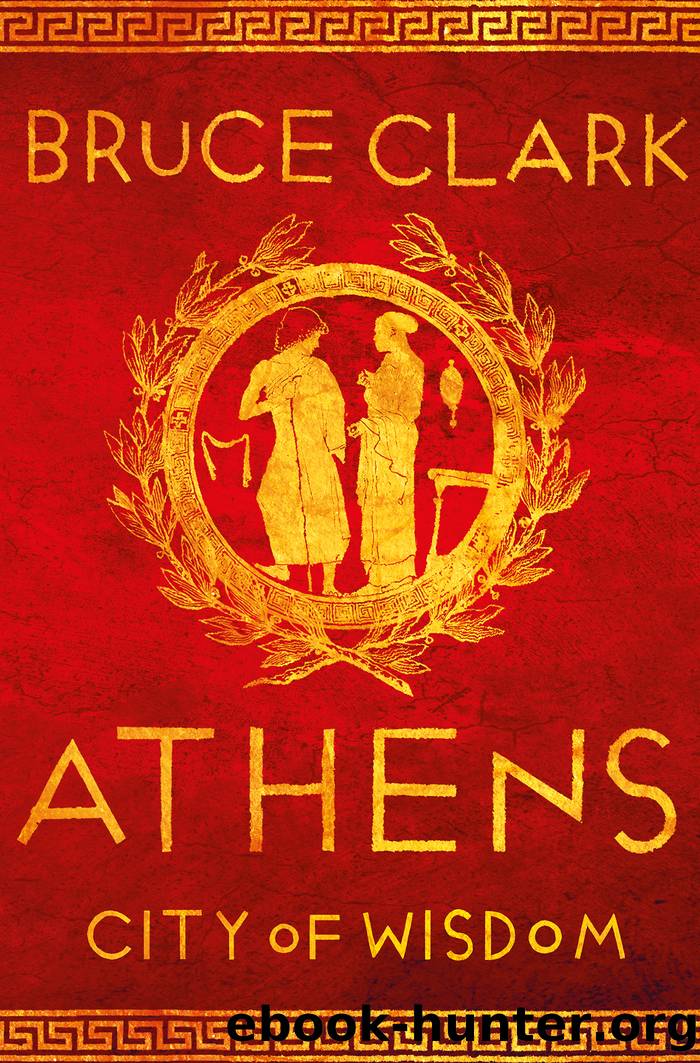Athens by Clark Bruce;

Author:Clark, Bruce; [Clark, Bruce]
Language: eng
Format: epub
Publisher: Head of Zeus
*
As soon as he was sent to the Porte, Elgin declared that one of his goals would be promoting, in one way or other, the cause of artistic refinement in his home country. In keeping with the general mood among the elites of Europe, he was convinced by his artistic advisers that ancient Greece, and Athens in particular, were indispensable sources of that refinement.
He almost hired a twenty-four-year-old painter, J. M. W. Turner, as his personal artist, and had negotiations not failed over money, he might have been content with having antiquities depicted in oil. The artistic heritage of at least two countries would in the event be much richer now. Instead, Elgin recruited Giovanni Battista Lusieri, a landscape painter serving the royal house of Naples, plus at least five more artists (four Italian, one Russian) to serve his diplomatic mission. Another important adviser was Philip Hunt, a shrewd and worldly cleric who besides being chaplain to the embassy in Istanbul was entrusted with many diplomatic missions. Such was Huntâs opportunism that at one point, he suggested that Elgin might haul off all six of the maidens adorning the Erechtheion, if only a naval ship could be found. In the event, only one was taken away to London.
Elgin said later that he initially planned only to record and mould the sculptures on the Acropolis, so that they might be reproduced more accurately back home: this was roughly what James Stuart and his backers had had in mind half a century earlier. The ambassador insisted that the idea of physically exporting Athenian artefacts only came to him when he saw local conditions and understood how vulnerable those artefacts were. Elgin borrowed evidence from Stuartâs oeuvre to explain why he felt compelled to go much further than Stuart had. As the earl noted, the âold temple on the Ilisos riverâ which Stuart had painted so beautifully in the 1750s was torn down thirty years later to reuse the stones in a new city rampart. Was such vandalism not grounds for saving the antiquities of Athens, while there was still time, by removing them? Elgin even claimed to have met Turks who had admitted grinding down precious pieces of Athenian marble to make mortar.
Elginâs account of his motivation does not convince. He did not go to Athens until 1802, by which time the removal of sculptures from the city, under Lusieriâs supervision, was at an advanced stage. However, it does seem likely that the scale of Elginâs plan broadened progressively over time. This was not because of an increasingly pressing need to âsaveâ anything, but because of the ever-greater opportunities provided by the diplomatic climate of 1801, when Britons and Ottomans fought side by side to dislodge the French from Egypt. Elgin himself noted that growing Anglo-Turkish ties brought steadily more enticing opportunities for the antiquarian: âIn proportion with the change of affairs in our relations towards Turkey, the facilities of access were increased to me and to all English travellers; and about the middle of the summer of 1801 all difficulties were removed.
Download
This site does not store any files on its server. We only index and link to content provided by other sites. Please contact the content providers to delete copyright contents if any and email us, we'll remove relevant links or contents immediately.
The Daily Stoic by Holiday Ryan & Hanselman Stephen(3110)
The Fate of Rome: Climate, Disease, and the End of an Empire (The Princeton History of the Ancient World) by Kyle Harper(2874)
People of the Earth: An Introduction to World Prehistory by Dr. Brian Fagan & Nadia Durrani(2619)
Ancient Worlds by Michael Scott(2493)
Babylon's Ark by Lawrence Anthony(2432)
Foreign Devils on the Silk Road: The Search for the Lost Treasures of Central Asia by Peter Hopkirk(2388)
The Daily Stoic by Ryan Holiday & Stephen Hanselman(2344)
India's Ancient Past by R.S. Sharma(2295)
MOSES THE EGYPTIAN by Jan Assmann(2275)
The Complete Dead Sea Scrolls in English (7th Edition) (Penguin Classics) by Geza Vermes(2135)
Lost Technologies of Ancient Egypt by Christopher Dunn(2111)
The Earth Chronicles Handbook by Zecharia Sitchin(2101)
24 Hours in Ancient Rome by Philip Matyszak(1973)
Alexander the Great by Philip Freeman(1960)
Aztec by Gary Jennings(1878)
The Nine Waves of Creation by Carl Johan Calleman(1784)
Curse Tablets and Binding Spells from the Ancient World by Gager John G.;(1768)
Before Atlantis by Frank Joseph(1740)
Earthmare: The Lost Book of Wars by Cergat(1715)
